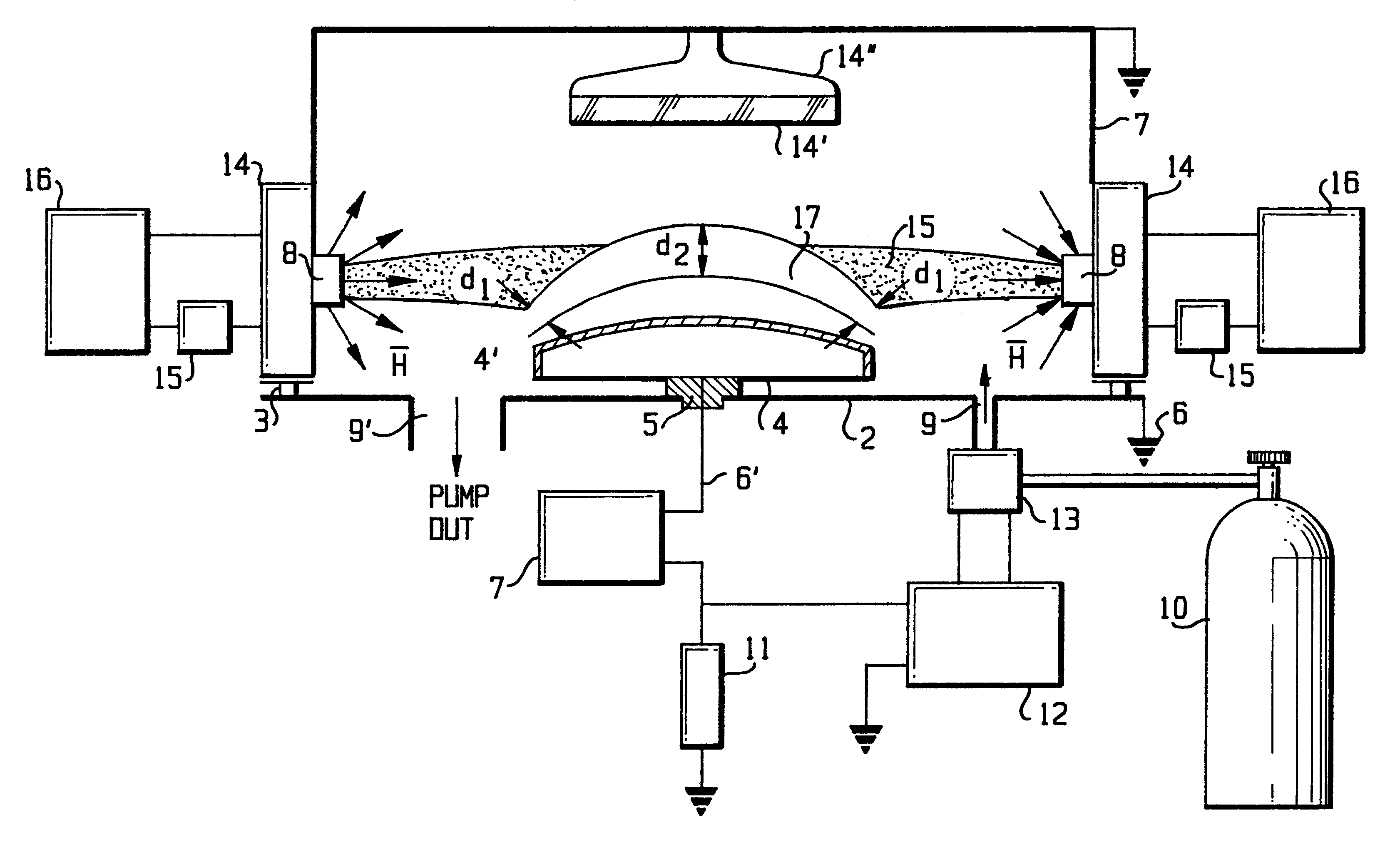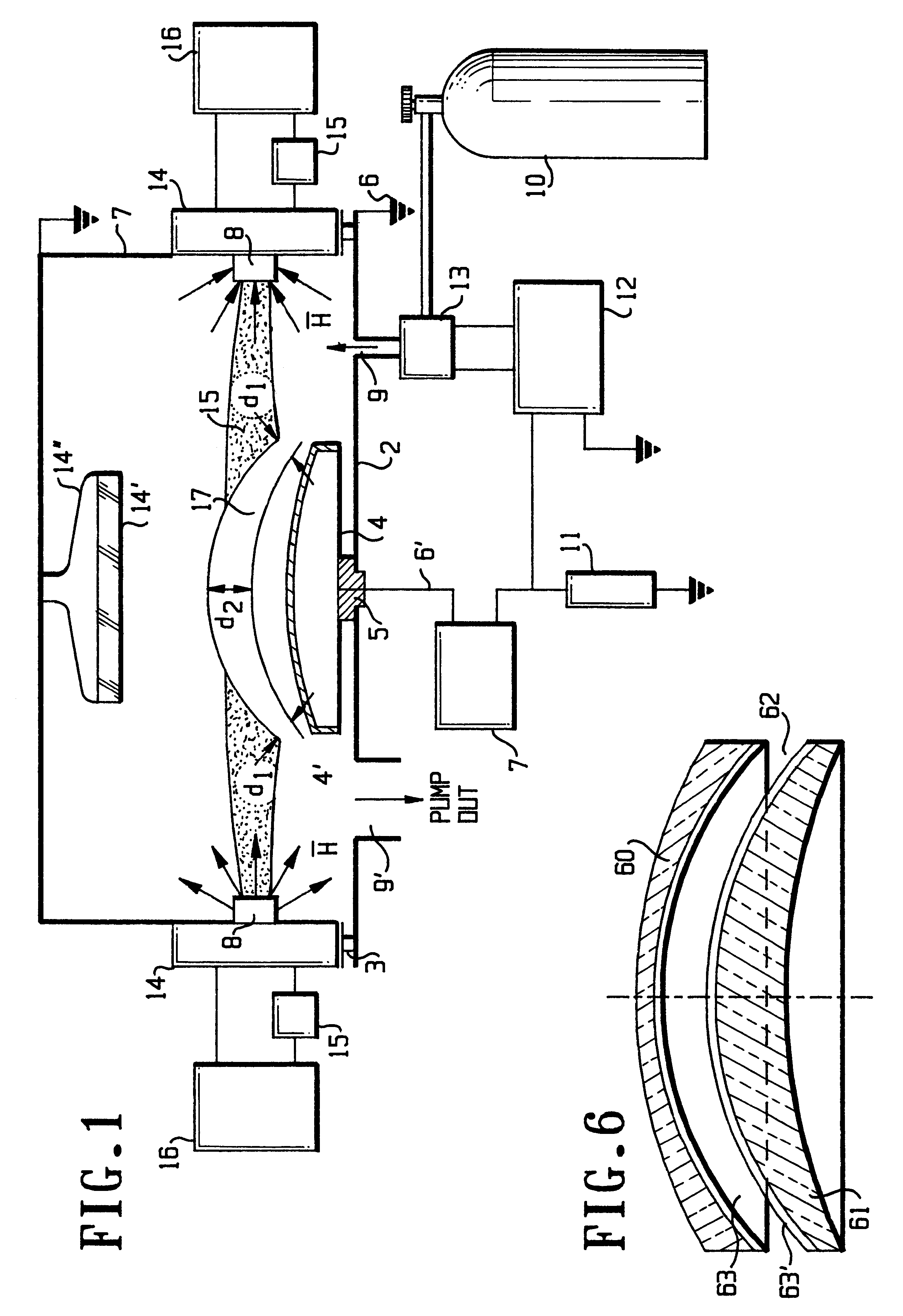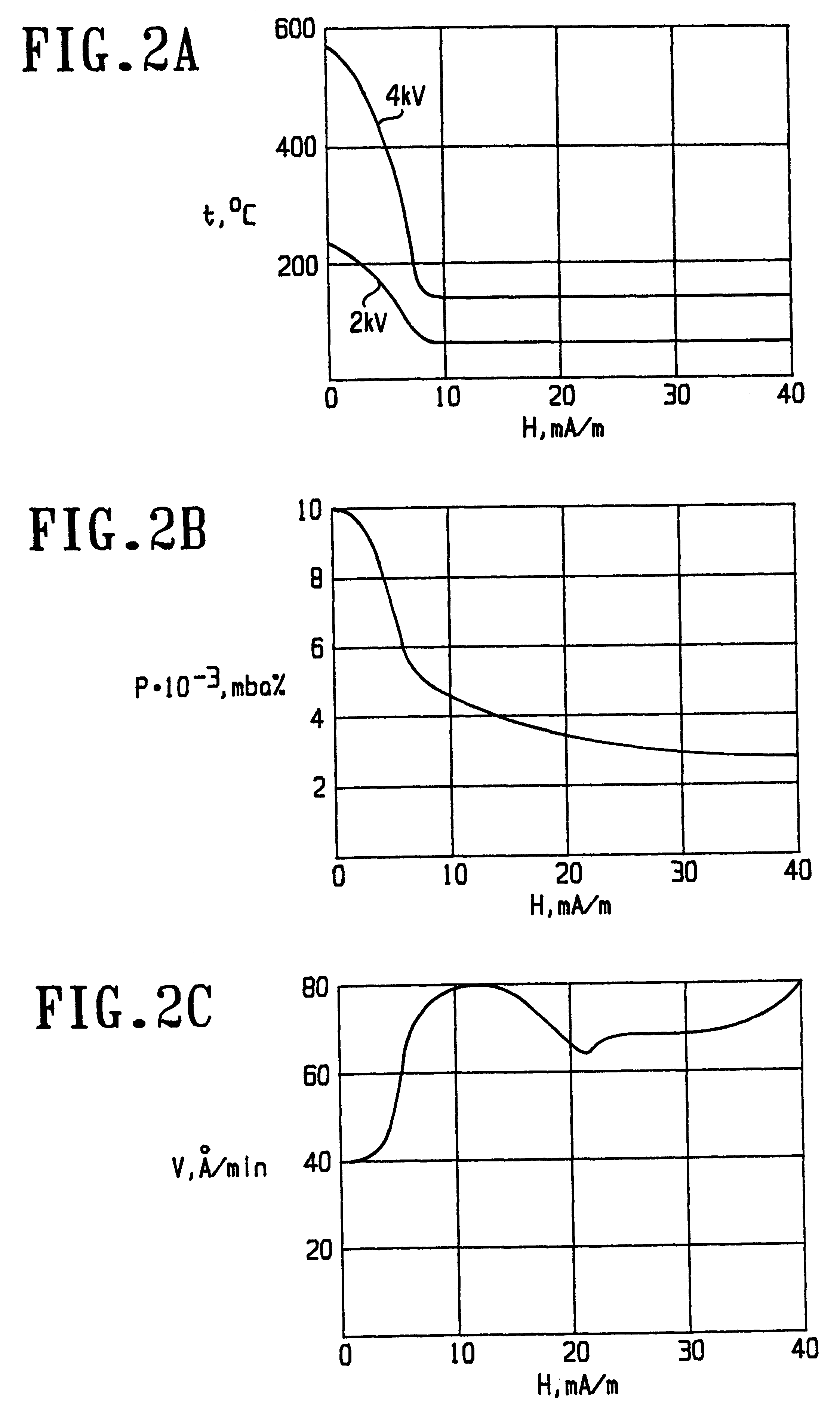Sputtering method and apparatus for depositing a coating onto substrate
- Summary
- Abstract
- Description
- Claims
- Application Information
AI Technical Summary
Benefits of technology
Problems solved by technology
Method used
Image
Examples
example 1
The substrate 14' is mounted on the substrate holding means so as to face the target surface 4' and to be spaced therefrom by a distance 5-20 cm.
The chamber 1 is sealed; its interior is evacuated up to pressure 0.001-0.004 Pa.
The current supply 16 is initiated and parameters of magnetic field are adjusted by means of a control means 15, so as to create a magnetic strength gradient, sufficient for localization of plasma within a region, separated by a distance of 3-15 cm from the substrate 14'.
The power supply 7 is initiated and a potential of 2-5 kV, negative with respect to grounded chamber 1 is supplied to the cathode pole structure 4.
By means of current sensor 11 the value of discharge current is adjusted and the stream of reactive gas mixture is fed into the chamber from the source 10, up to building working pressure, sufficient for maintaining of self-sustained glow discharge. Particular parameters suitable for deposition of Al2O3 coating on stainless steel substrate were:
Suppl...
example 2
Sputtering Conditions:
Water cooled cathode, made of stainless steel, provided with Al target, having square configuration 100.times.300 mm
Anode-cathode distance 60 mm
Reactive gas: mixture of 80% argon with 20% oxygen
Supplied voltage: 4 kV or 2 kV
Supplied power: 1.2 kW and 0.2 kW respectively
Resulting coating: Alumina
As it can be easily seen in FIG. 2a, sputtering with magnetic focusing is always accompanied by reduction in substrate temperature t and after establishing of magnetic strength H of app. 10 kA / m the temperature has been reduced from 580 / 220 deg.C. down to 130 / 50 deg.C. for supplied voltage 4 / 2 kV respectively.
FIG. 2b shows that when a magnetic field with the strength of at least 10 kA / m is applied in the vicinity of the target surface and the supplied voltage is 4 kV, the working pressure of reactive gas atmosphere reduces from 0,01 mbars (1 Pa) to app. 0.005 mbars (0.5 Pa) without interruption of glow discharge between cathode and anode and termination of sputtering.
FIG...
example 3
Water cooled cathode with diameter 60 mm.
Supplied negative voltage: 2 kV
Discharge current: 300 mA
Reactive gas mixture: 80% Oxygen, 20% Argon
Working pressure: 0,004 mbar
Target material: Si
Substrate material: Kronglass
Magnetic field strength in vicinity of anode: 40 kA / m
Magnetic field strength in vicinity of target surface: 12 kA / m
Resulting coating: SiO.sub.2
For evaluation of chemical resistance the coated and uncoated glass samples were exposed to 80% solution of sulfuric acid at 80 deg.C. for 8 hours and concentration of certain elements was measured before and after exposure within the sample. The uncoated samples were made of Kronglass. A 0.4 .mu.km-thick SiO.sub.2 coating was deposited on both sides of the sample.
Si, Na and K concentrations were measured using the EDS method within the 4 .mu.m-thick surface layer, including the coating.
Table 2 below summarizes the chemical composition of a surface layer, as measured for coated and uncoated samples before and after exposure, as we...
PUM
| Property | Measurement | Unit |
|---|---|---|
| Fraction | aaaaa | aaaaa |
| Fraction | aaaaa | aaaaa |
| Fraction | aaaaa | aaaaa |
Abstract
Description
Claims
Application Information
 Login to View More
Login to View More - R&D
- Intellectual Property
- Life Sciences
- Materials
- Tech Scout
- Unparalleled Data Quality
- Higher Quality Content
- 60% Fewer Hallucinations
Browse by: Latest US Patents, China's latest patents, Technical Efficacy Thesaurus, Application Domain, Technology Topic, Popular Technical Reports.
© 2025 PatSnap. All rights reserved.Legal|Privacy policy|Modern Slavery Act Transparency Statement|Sitemap|About US| Contact US: help@patsnap.com



